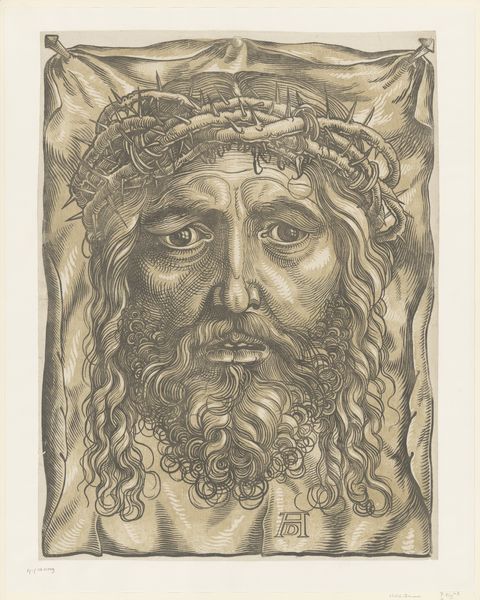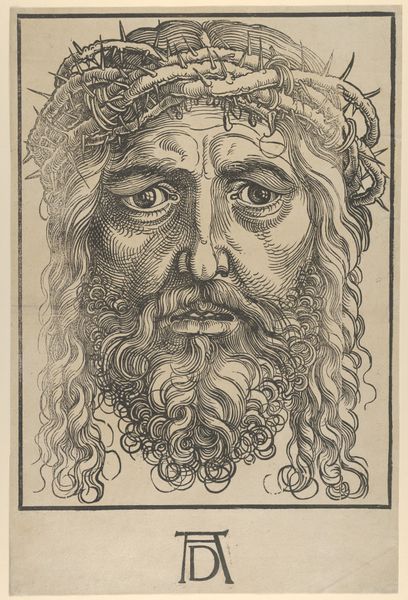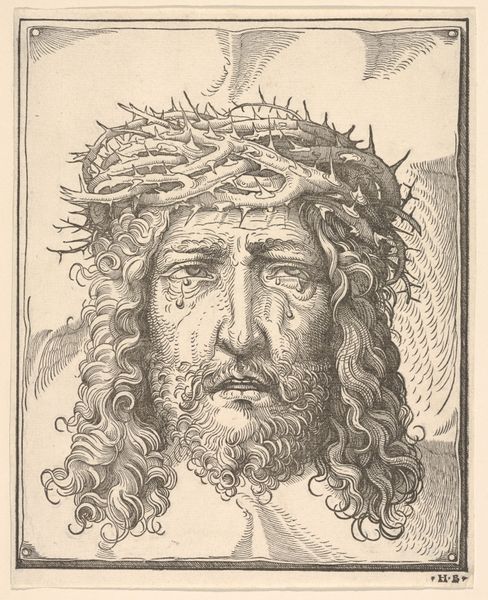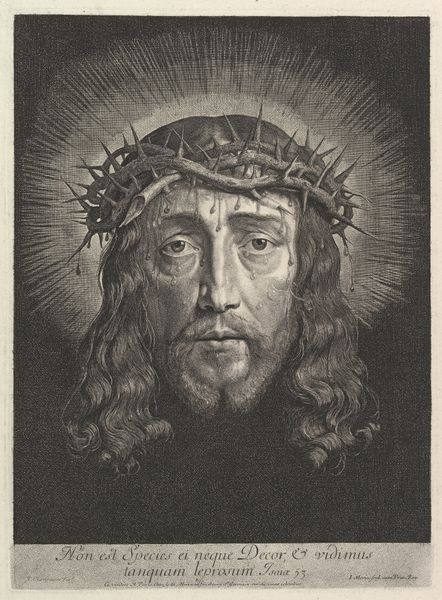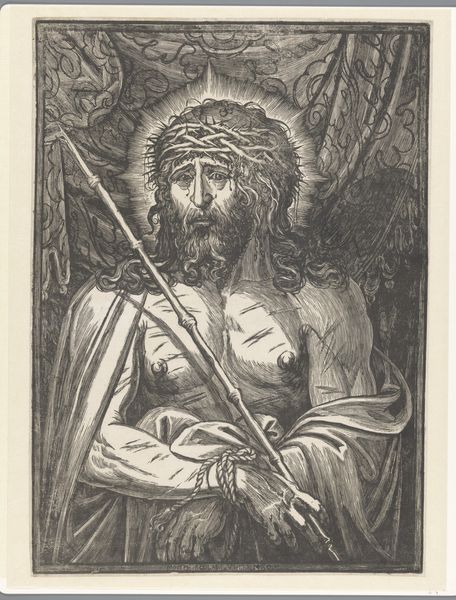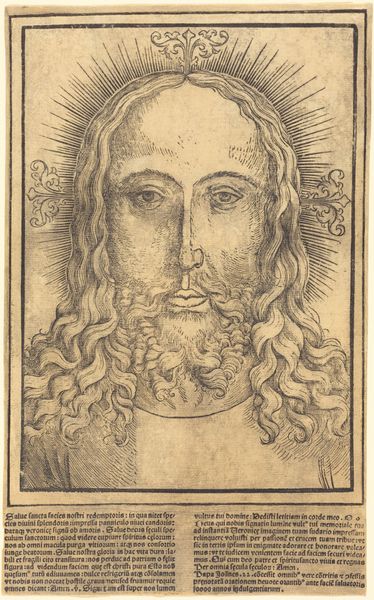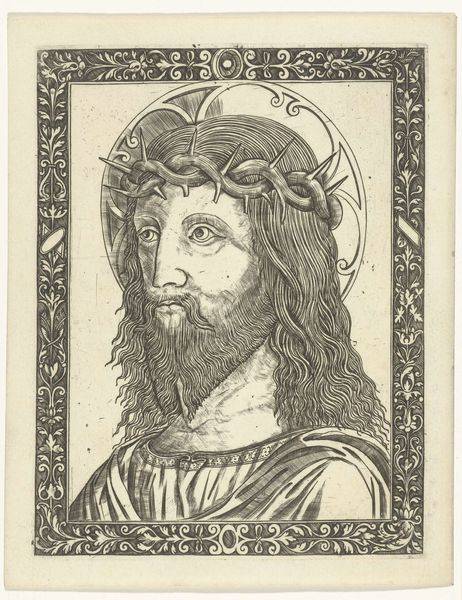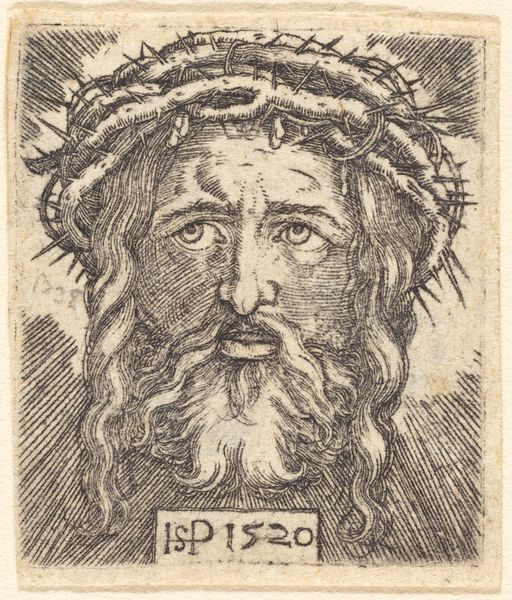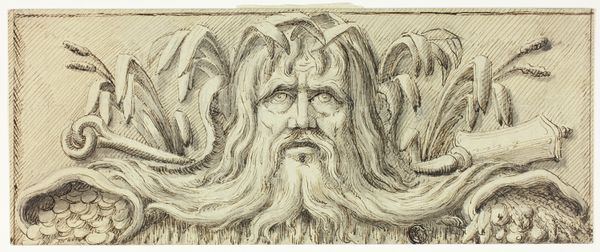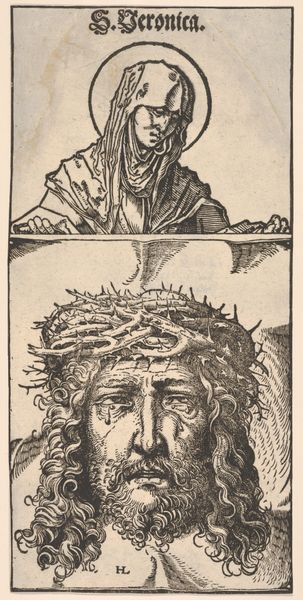
drawing, paper, ink, indian-ink
#
portrait
#
drawing
#
pencil sketch
#
figuration
#
paper
#
11_renaissance
#
jesus-christ
#
ink
#
german
#
indian-ink
#
13_16th-century
#
portrait drawing
#
history-painting
#
northern-renaissance
Copyright: Public Domain
Curator: Let's turn our attention to "Das Schweißtuch der Veronika mit dem Antlitz Christi," or "The Veil of Veronica with the Face of Christ," an intriguing drawing crafted around 1804, presently held in the Städel Museum collection. The artist behind it is Clemens Aloys Hohwiesner. Editor: It's striking, isn’t it? The first thing that grabs me is the intensity of expression, rendered so precisely in what appears to be ink and pencil. It projects a sense of sorrow and profound suffering. Curator: Hohwiesner's skillful application of line weight and texture indeed contributes to the palpable sense of anguish. What’s also important to consider is the materials used. The choice of Indian ink on paper is significant. Indian ink allowed for these sharply defined contours, making visible not only the agony in Christ's face, but the artistic labour. Editor: Absolutely. And I’m drawn to the symbology here. The crown of thorns, of course, is an instantly recognizable symbol of Christ’s passion. The veil itself… it speaks to ideas of sacred relics and authentic likeness. This artwork taps into centuries of religious art tradition, of portraying Christ’s image, suggesting an almost spiritual, or historical authenticity. Curator: It certainly speaks to tradition, particularly the persistent visual language surrounding this image in the early 19th century. It really pushes us to think about the commodification of faith, right? How religious images were circulated and consumed by diverse audiences in Hohwiesner's time. Also think about paper production; who was afforded it? What value did the labor hold? Editor: I agree. This is not merely an aesthetic or artistic achievement; it functions as a cultural artifact imbued with layers of historical and religious meanings. Curator: Well, looking closer at this "Veil of Veronica," one has to consider its relationship to commerce as a signifier of social value, something Hohwiesner, intentionally or not, makes visible in this detailed work. Editor: Yes, contemplating on both the historical context and the use of iconography definitely enrich the understanding of its continuing influence. Curator: I agree, thinking about artistic labor as it functions within a specific context alongside this artwork and its cultural image, is essential to appreciate the depth of the art.
Comments
No comments
Be the first to comment and join the conversation on the ultimate creative platform.
